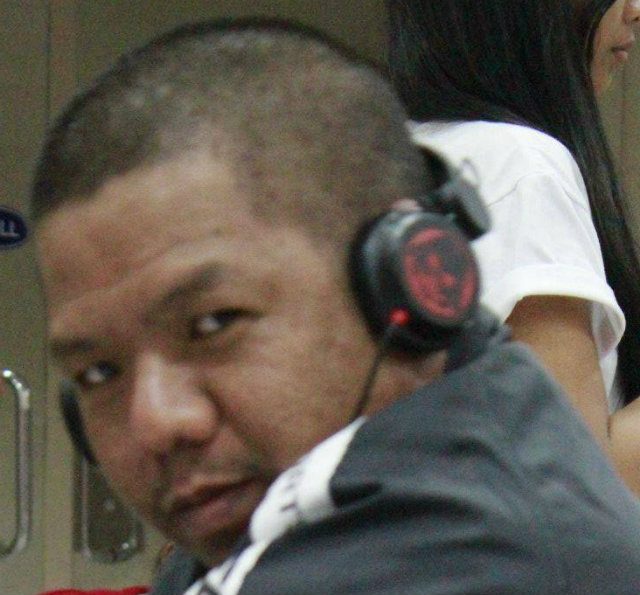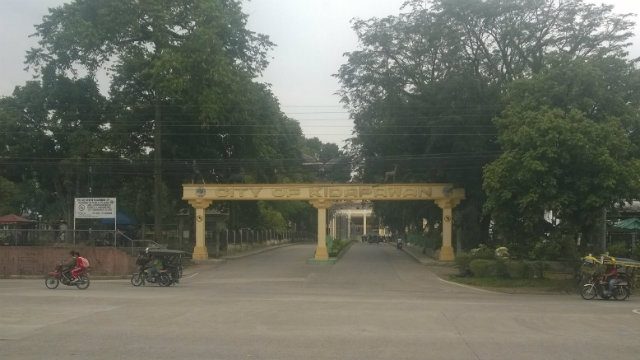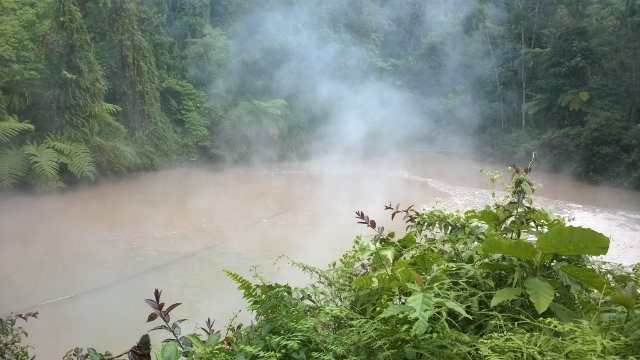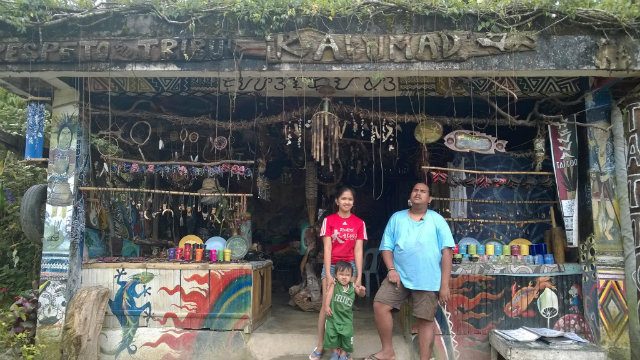SUMMARY
This is AI generated summarization, which may have errors. For context, always refer to the full article.

It was the third time I visited my doctor that month. The accumulated strain and stress of working was eating away at my already weak body. The doctor looked at me, wondering what to do with me.
“Go to Lake Agco. Get some rest there, at least 4 days.”
Where is Lake Agco? Since I wasn’t doing anything anyway. I decided to ask around. Googling it, I found out that it’s in Kidapawan, North Cotabato, at the foot of Mt Apo and part of the Manobo tribe’s ancestral land.
There were some blogs describing the place, but they were scarce in the information they gave. Even my friends and co-workers who have been there left me with even more questions.
Fortunately, one of my aunts offered to bring me to the place for a day to check things out for myself, to help me get ready for my solo trip ahead.

So, in the tradition of my helpful aunt, here is a chronicle of my trip to Lake Agco, the people to meet there, the places to check out, and the experiences you may look forward to. Hopefully, this will be comprehensive enough to arouse your interest and answer any questions you may have.
Going to Lake Agco
Please take note that I was traveling alone in this situation: without a vehicle of my own and using the available public transportation in the area.
You can get on a bus at Ecoland Terminal in Davao City to Kidapawan for about P150. When you get to Kidapawan, you can ask the driver or conductor to drop you off at the Shell gasoline station.
Going to Lake Agco from downtown means you’ll have to ride a habal-habal, basically a motorcycle with a few modifications to accommodate 3 passengers instead of the usual two. The terminal is right beside the Shell gasoline station along the highway. If you want go alone or with just a friend, you can hire the driver for P250, which is helpful if you’re lugging a heavy cargo like a large backpack. But if you’re willing to wait until there are two additional passengers, the fare is P85 per person.
The first thing you will notice on the way up is the sudden drop in temperature, mainly because of the profusion of trees along the road. Even though most of the way up is already paved, the habal drivers still show their skills in going uphill, especially in the scary parts of the ground which are unpaved, winding, and ascending – all at the same time. They’ll bring you to the resort complex made up of the Lake Agco trail and two resorts in about an hour, depending on the weather.

Lake Agco is a hot sulphur lake, something like a crack in the volcano that is Mt Apo. For P10, you can go up a short trail and see it send up steam from its dark brown boiling waters. You know you’re there because the very air smells of sulphur: just like a rotten egg. In fact, the concentration of the substance is so great that some trees near the lake are covered in the yellow powder.
I stayed at Antapan Mountain Resort, a Manobo word meaning forge, where iron tools and weapons were made in the olden days. Its small compound is right next to the Lake Agco trail.
It has a couple of rooms with large double-deck beds and small toilets. The accommodations are quite spartan, especially since electricity is only available from 6 pm to 10 pm. But for those like me who want to escape the trappings and burdens of city life to get closer to nature, it’s perfect.
The main feature of Antapan is its sulphur water jacuzzi, an artificial pool that taps into the sulphur-infused hot water from the lake and makes it more manageable by mixing it with the cool water that comes from the multitude of springs in the area. Their steam bath, a man-made cave housing a vent that releases sulphur water vapor so hot that you don’t know if you’re wet from the steam or your sweat, is also a must-try.
I strongly recommend the jaccuzi. The water seems unbearably hot at first, especially since you have to shower in the cold mountain water before dipping in. But as you immerse yourself more, it becomes a warm and pleasant feeling all over your body. Apparently, the experience becomes even more enjoyable with family and friends, as you hang out and chat around the bubbling fountain that supplies the sulphur water in the middle of the tub.
After the jacuzzi, try the steam bath right next to it. Like I said before, it gets intensely hot. The vapors will be stifling, and it’s recommended that you cover your mouth and nose with a wet cloth to keep yourself from inhaling the sulphur in the vapor. But the 5 minutes there – no more than 5, any longer will be dangerous – will open up your pores for sure.
The routine I developed goes like this: cold shower, jacuzzi, steam bath, jacuzzi, cold shower. Repeat as desired.
‘Digong Duterte’
A little farther up the path, you’ll get another majestic view of the lake, taken from a commanding height. There’s a little grove at the end of the oath, with a small bamboo hut that serves as a shrine, called pamaasan, one of the many sacred sites found all over the place.
I noticed that most of these holy places are on high places, apparently the mountain crests. I’ll leave it as a challenge for you to find out for yourselves, preferably by asking the Manobos.
My personal favorite spot is under 27, as I call it after the metal tag I found on its trunk, an extremely large and tall tree behind the shrine that is encircled in wooden vines and has a crown so lush and thick that other plants grow on it. Looking up from under 27, a sense of humility grows inside you as you feel your minuteness in the presence of such grandness.
Kuya Joel “Dodong” Ayag and his wife Ate Juvy lead the Antapan staff, made of the rest of the hospitable Ayag family. In my 4 days with them, they’ve been very helpful and accommodating. Our transaction only guaranteed a room and free access to the baths, but even on the very first night they offered to share their meal with me.
Eventually, it started to look and feel like I was a visiting relative on vacation, giving me my space but always accommodating when I ask for their help. Aside from their familial warmth, they also gave me a peek into the local folklore that is so rich in places like this, and makes the stay even more meaningful.
At the end of the resort complex is Agko Mahomanoy Mountain Resort. This is a commercial resort made to cater to a larger clientele. Aside from swimming pools, they also have a larger steam bath and hot water pool, day cottages, more overnight rooms that have more of the creature comforts, and a round-the-clock power supply.
Basically, Antapan, and Mahomanoy have different niches. The former caters to those who prefer a quieter and intimate retreat, while the latter serves weekend warriors out to have fun.

I also made friends with a local artist Eduardo “Digong” Duterte, who owns a souvenir shop cum art gallery, Respeto Katribu Kalumad, right inside the Antapan compound. He has the most extensive and authentic works among the different booths in the area: with offerings ranging from the typical tourist staples like henna tattoos, coin purse, and keychain baubles, to more intense neo-tribal works of wood and scrap sculptures, paintings from different-colored soils, ornaments and accessories made from animal skeletons. If you’re willing to wait a day or two, he can even make you a custom piece, like my bad-ass walking stick.
On the crossroad leading to the Agco resorts, there is an uphill path that no one seems to go to. Since I found myself with nothing to do, I decided to check the place out. Asking around, the habal drivers explained that it leads to a couple of buildings, called Balay Kalikasan, now abandoned, that used to be serve as administrative and commercial buildings to the geothermal company operating nearby.
The local high school occupied it until early 2014, when it moved into the integrated school that serves the community. The administrative building is a good-looking place, architecturally speaking. But there’s a certain vibe to it, brought by the overgrowing vegetation and general feeling of abandonment that just gave me the shivers.
Going back to roots
For the adventurous at heart and strong in body, you might want to try climbing up to the temple at Mandarangan, said to be the home of the warrior hero Tulalang, who was a defender of the Manobo. It’s called a temple in the sense that not only is it one of the many sacred places of the Manobo, but they also share it as a place of worship for Christians and Muslims.
Fortunately for me, a kid named Gerard became my impromptu guide, and I honestly think I wouldn’t have made it without his help.
The trail starts at the bend of the road going to the resorts, where a billboard for Mt Apo Resorts stands at a semi-collapsed concrete wall, with a small waiting shed found nearby. You can find the trail by looking for the small steam vent a little way up. Follow the trail until you reach the top of the hill. From there you have two choices: a long, downhill path that gives you a good view of the 3 steam vents in the area; or a short, more treacherous route following the crest of the hill.
The downward path is scenic and more manageable, with safe places to stand for taking photos of the little hot water streams that crisscross the trail, but will take a while to reach the temple.
The shorter way takes you directly to the shrine, but will ask a lot of you, taking you up and down a trail of white, soft clay, which sometimes gives way underfoot, not to mention the long drop that awaits you from both sides. In exchange, you’ll find yourself right smack in the middle of one of the cracks, with steam rising beneath your feet.
The temple itself is a place that’s beautiful, yet unassuming. The photos you can get there are already great in itself, but what’s even greater is that if you take time and lend yourself to the silence; it becomes a great place for prayer and meditation. If you’re lucky, the 3 crests of Mt Apo, which, according to Manobo legend outlines Mamalo, the father of the Manobo people, will show himself to you.
Does going here to unwind help? Yes, it does, especially if the burdens of city life begins to bring you down and you feel stifled by the life you lead.
Digong once shared, “Nangkikan ka sa kinaiya. Maayo nang usahay mubalik pud sa sa kinaiya labi na pag daghan na kaayo tay ginaproblema, para makarefresh ta. Dapat mahinumduman nato asa ta gikan.”
(We come from nature. It’s helpful once in a while to come back to nature, especially when we have a lot of problems to refresh ourselves. We must remember our roots.)
In my case, not only did I regain my health, my peace of mind, and my spiritual strength. I came back with a new sense of self, a new perspective, a new mission in life.
“We (lumad) are guardians of nature,” explained Kuya Dodong. “What we do here is share with you what we care for, so that you may also join in protecting it.”
Hopefully, someday, you’ll also find yourself in Lake Agco. Hopefully, you’ll also have a great time there. Hopefully, you’ll also renew yourself. And, hopefully, you’ll also leave, having learned a new lesson in life. – Rappler.com
Edwin Oscar Gutierrez Jr is the school paper adviser of Tagum City National High School. He is Rappler’s lead mover for Davao del Norte.
Add a comment
How does this make you feel?
There are no comments yet. Add your comment to start the conversation.